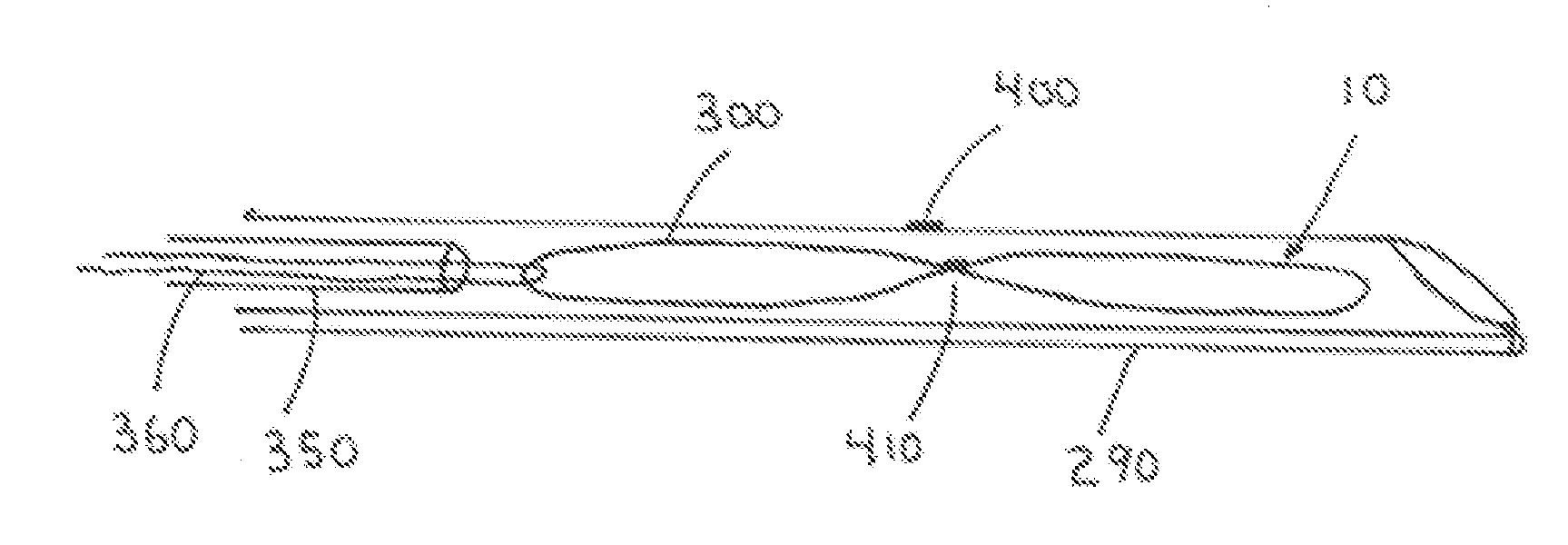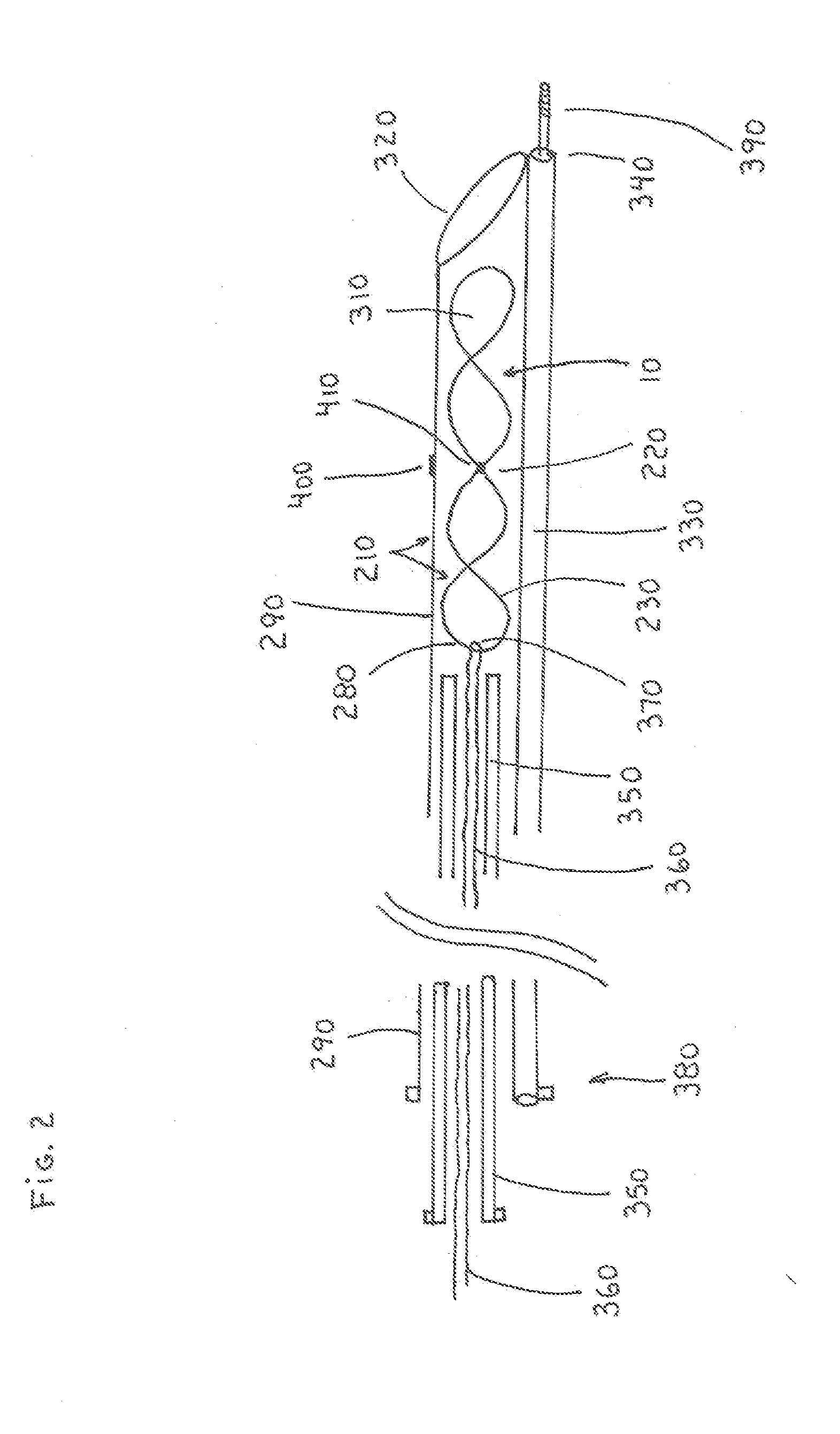Branch and Truncal Vessel Occluder
a truncated vessel and occluder technology, applied in the field of implants, can solve the problems of varicose veins and superficial venous insufficiency, blood from the deep system into the superficial system, and high device cost, and achieve the effects of preventing recurrence, and reducing the risk of recurren
- Summary
- Abstract
- Description
- Claims
- Application Information
AI Technical Summary
Benefits of technology
Problems solved by technology
Method used
Image
Examples
Embodiment Construction
[0033]The present invention is an occlusion device (10) (FIG. 1A) that is passed percutaneously or transcutaneously into a truncal vessel (20) or deep vein (30) and delivered to a perforator vein or other branch vessel (40) that extends from the truncal vessel (20) or is delivered directly into a truncal vessel (20) or branch vessel (40) to occlude such vessel directly. Access to the truncal vessel (20) can be from a distal site such as a GSV or a SSV near the ankle or access can be from a proximal site into the GSV or SSV near the inguinal fold or near the knee. The device can also be delivered percutaneously to an artery or other tubular member of the body to create an occlusion.
[0034]FIGS. 1A and 1B show a first embodiment of the present invention as it applies to occlusion of a perforator vein or other branching vessel (40) off of a truncal vein such as a saphenous vein or other truncal vessel (20). The occlusion device (10) is comprised of a branch portion (50) that extends int...
PUM
 Login to View More
Login to View More Abstract
Description
Claims
Application Information
 Login to View More
Login to View More - R&D
- Intellectual Property
- Life Sciences
- Materials
- Tech Scout
- Unparalleled Data Quality
- Higher Quality Content
- 60% Fewer Hallucinations
Browse by: Latest US Patents, China's latest patents, Technical Efficacy Thesaurus, Application Domain, Technology Topic, Popular Technical Reports.
© 2025 PatSnap. All rights reserved.Legal|Privacy policy|Modern Slavery Act Transparency Statement|Sitemap|About US| Contact US: help@patsnap.com



